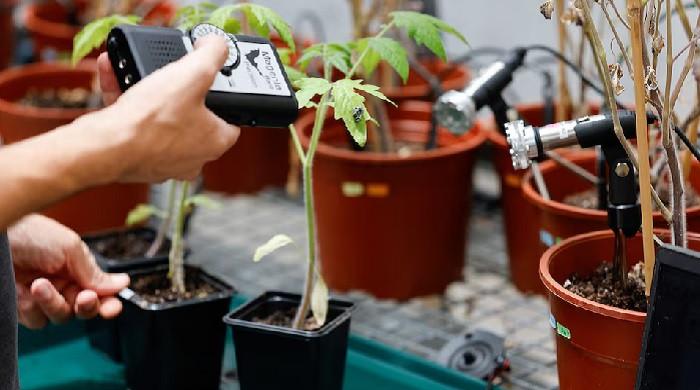There is evidence that plants and insects interact through sound, said researchers from the University of Tel Aviv on Tuesday, opening a new border in the study of acoustic communication in nature.
The study, published in the ELIFE magazine, suggests that female moths detect ultrasonic anguish signs emitted by dehydrated tomato plants and use this information to decide where to place their eggs.
The moths usually put their eggs on tomato plants to provide food for their larvae after they hatch.
The investigation was directed by Rya Sethzer and Guy Zer Eshel in the laboratories of Yossi Yovel and Lilach Hadany, both professors of the wise Faculty of Life Sciences of the University.
“We reveal the first evidence of acoustic interaction between a plant and an insect,” the team said in a statement.
The findings are based on previous investigations of the group, which revealed that the plants emit ultrasonic sounds when they are under stress.
The discovery could have implications for the control of agriculture and pests, opening possibilities to handle the health of crops and the behavior of insects through sound.
While ultrasonic sounds emitted by plants are outside the human hearing range, many insects and some mammals can pick them up, such as bats.
Investigating this preference, the researchers presented to the female moths with two healthy tomato plants, one with a speaker playing registered sounds in a drying plant and one that was silent.
The moths preferred the silent option, which suggests that they use these signals to identify optimal sites to put eggs.
Other experiments confirmed that moth options were specifically guided by sound and only by plants sounds.
“Here, we have seen that there are animals capable of making sense of these sounds,” said Hadany.
“We believe this is just the beginning. So, many animals can be responding to different plants.”




